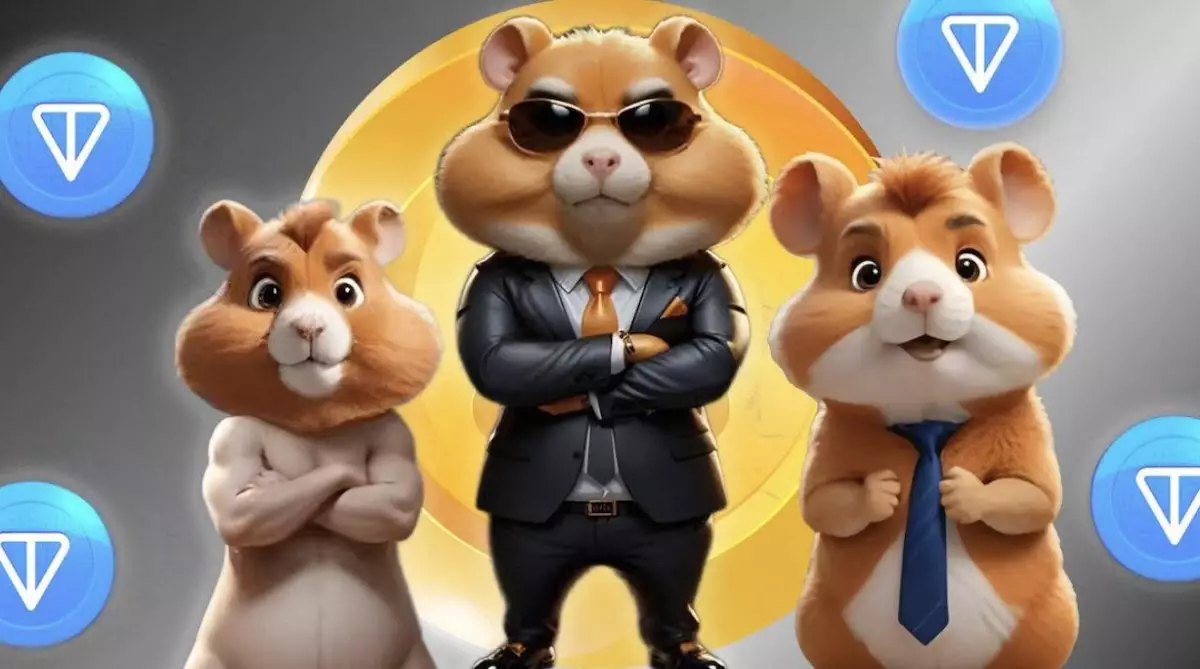In an era where technology is redefining entertainment, Hamster Kombat—a clicker game gaining traction on Telegram—has announced an extensive development roadmap set to extend through 2025. The innovative team behind this lighthearted venture is making bold moves towards integrating Non-Fungible Tokens (NFTs) into the gameplay, building a Web3 gaming platform, and establishing a unique token economy. This strategy not only positions Hamster Kombat for future success but also places it at the forefront of the burgeoning space of blockchain gaming.
Central to Hamster Kombat’s evolution is the integration of NFTs as in-game assets. This transition allows players to own, trade, and monetize virtual items that either result from gameplay or that users buy. Such changes mark a paradigm shift in how players engage with the game, greatly enhancing their experience by fostering a sense of ownership and community. Additionally, the development team is laying the groundwork for an advertising network aimed at boosting revenue streams, thereby securing additional resources for further project expansion.
As the game’s ecosystem expands, it is anticipated that competitiveness will ramp up significantly with the introduction of clan championships. By welcoming a more competitive format, Hamster Kombat intends not only to keep its existing player base engaged but also to attract a new audience of competitive players and collectors intrigued by the prospect of earning rare NFTs. This evolution is vital as the landscape of online gaming becomes increasingly competitive, suggesting that Hamster Kombat is committed to remaining at the forefront of its genre.
The roadmap indicates aspirations that extend beyond mere gameplay; the developers envision a holistic Web3 gaming experience. This ambition transcends the typical expectations of idle clicker games, positioning Hamster Kombat as a keystone within a larger framework that melds the familiar usability of traditional Web2 applications with the decentralized and transparent nature of Web3 technologies.
At the heart of Hamster Kombat’s future lies the token economy, specifically the HMSTR token. The team is implementing a buyback strategy fueled by revenues from its new advertising network, characterized by token scarcity designed to increase the market value of HMSTR. This strategic approach has spawned speculation within crypto circles regarding the token’s potential trajectory. With a total supply capped at 100 billion tokens, opinions are divided among industry analysts—some projecting a prosperous future while others voice caution.
Recently, the team completed a much-anticipated airdrop of HMSTR tokens aimed at rewarding qualified players from their extensive user base, which has welcomed over 300 million players since its inception. However, the event was met with a mixed reception; only 131 million players qualified for the distribution, with allegations of cheating that resulted in approximately 2.3 million users being disqualified. Disappointment loomed over the community as many felt the rewards did not adequately reflect their loyalty and engagement with the game.
The fallout from the airdrop affected market sentiment, with steep price declines observed almost immediately. Various cryptocurrency trackers noted that HMSTR’s value plummeted, with losses reported as high as 41% on the day of the airdrop. Notably, a significant share of HMSTR tokens is currently held in a Binance hot wallet, raising questions about the liquidity and broader distribution of the token within its ecosystem.
Despite facing challenges in the initial stages of its token economy, the Hamster Kombat team is undeterred in its aspirations for Season Two. With plans to introduce new games and invigorate interest within its existing framework, the studio demonstrates resilience and a commitment to sustainability. The roadmap reveals several crucial milestones that could significantly influence the future of gaming on Telegram, particularly through the anticipated rollout of an NFT marketplace.
The integration of an NFT marketplace aligns with Hamster Kombat’s vision of cultivating a player-driven economy that encourages active participation from its users. This approach takes advantage of the growing popularity of Web3 gaming platforms, which are known for their transparency and community-oriented experiences rather than the traditional models dominated by corporate interests.
As one of the pioneering games on Telegram, Hamster Kombat’s evolution could very well become a benchmark for future blockchain projects. The gaming community is watching closely as the title navigates the complexities of NFTs, tokenomics, and user engagement in the ever-evolving landscape of blockchain gaming.
While potential pitfalls lie ahead, the future remains bright for Hamster Kombat as it champions innovation and the democratization of play. Only time will tell if the strategies the team has in place will yield the desired outcomes, but they are certainly laying a strong foundation for a robust and exciting digital gaming frontier.














Leave a Reply